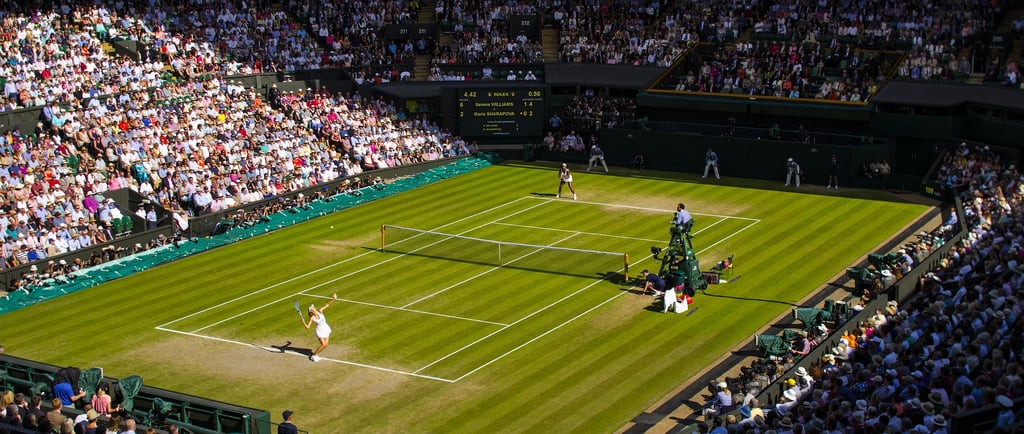How Green are Wimbledon's Grass Courts?
A smashing take on the green credentials of Wimbledon
Joseph Goddard
6/27/20252 min read


Wimbledon is one of the most prestigious sporting events in the world, and for good reason. Played almost every year since 1877, the world's oldest tennis tournament brings in a lot of players and a whole lot more spectators, often more than the venues can hold; the logistical challenges this brings also present challenges for the environment. Wimbledon staples like strawberries and cream, and the grass courts, as well as the invisible problems like travel to the pitches, the games themselves, and even the decoration all have their climatic impacts. So, is the LTA doing enough to mitigate them?
The clearest, greenest picture of Wimbledon undoubtedly contains the famous grass courts, and the All England Lawn Tennis Club (AELTC) puts a lot of resources into keeping them green. Over the championship fortnight alone, 160,000 litres of water are for court upkeep, excluding the 250,000 bottles of water sold. This isn't to discount their attempts to decrease their impact: 95% of irrigation water used is recycled and the new waste management schemes mitigate the issues associated with bottled water, but more can still be done, perhaps by toughening their refill initiative with Evian through reducing the sale of single-use bottles and installing more refill stations.
Along with water, attendees need food, and what more stereotypical of Wimbledon than strawberries and cream. Around 28,000 kg of strawberries are used over the fortnight, and any unsold are made into fresh fruit preservatives; though the same can't be said for the 7,000 litres of cream used.
It is fantastic to see Wimbledon have partnered with Notpla packaging made from seaweed, which is composted after use, virtually making it disappear. This marks a big step in reducing plastic waste and should be applauded.
The unsalvageable items are the 50,000 flowers used throughout the Championships which most likely come from Kenya or Ecuador. After flying them 6,000 miles across the globe, they'll all inevitably end up in the bin, even if they're necessary for the pomp and prestige of Wimbledon.
Further from the club's control, however, is everybody's travel. The carbon produced by flights for staff, players, and officials has increased even from pre-pandemic levels from ~2,500 to 2,701 tonnes of CO2e, making them the club's second largest source of emissions. This doesn't account for the fans' travel, and although the games do encourage visitors to travel effectively with their own journey planner, the tonnes of CO2e tallied for one's journey aren't dealt with or offset. Should off-setting carbon be considered perhaps funded by sponsors of the event?
Wimbledon will inevitably emit greenhouse gases, and comparatively, the AELTC is doing a lot to reduce its impact, aiming to achieve net zero from direct emissions by 2030. Whilst never totally free from emissions, the organisers are making great strides to reduce their impacts and are planning even more. A good example for others to follow.
Klere Limited
Nature data and carbon capture.
enquiries@klere.uk
Tel: 0203 583 1263
© 2024. All rights reserved.


